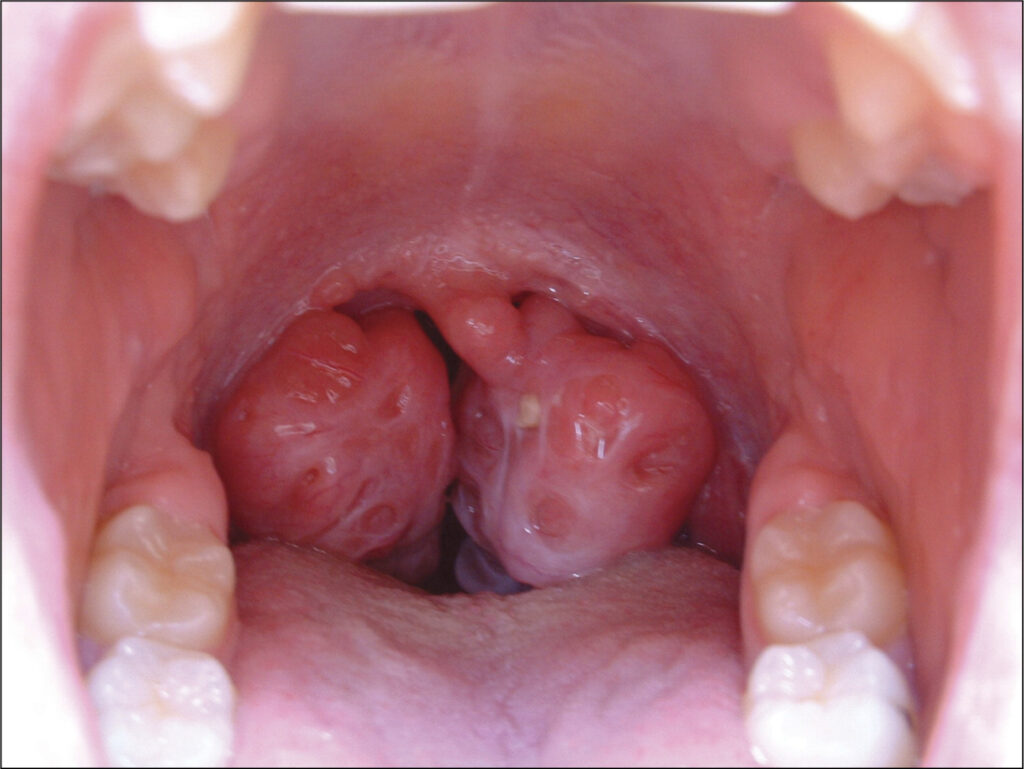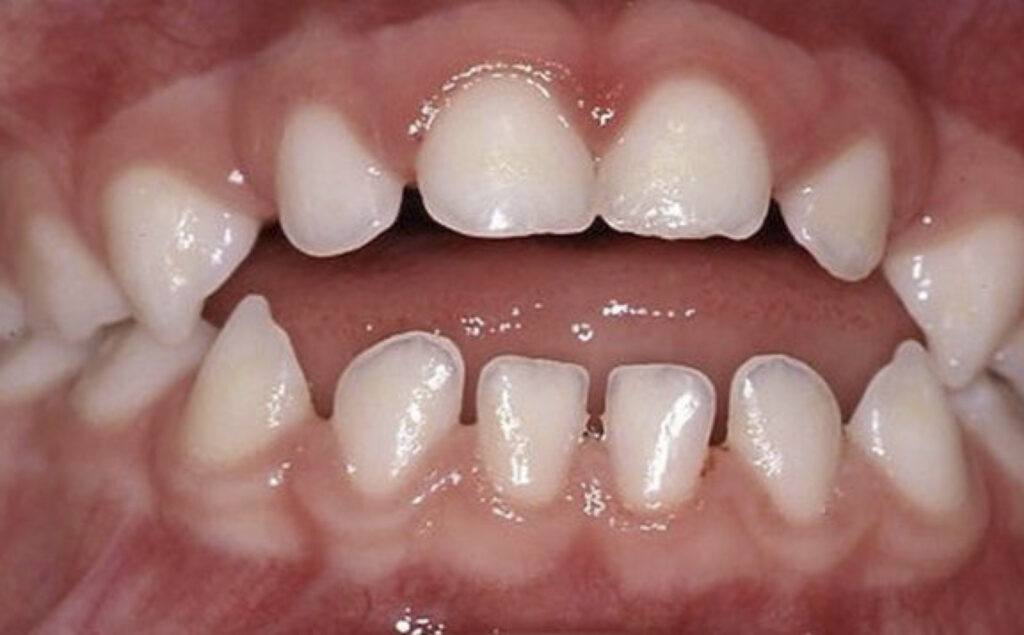Diagnosing and treating obstructed airways is one of the most rapidly emerging areas of dentistry. At TDA, we regularly diagnose and treat airway issues in adults. We evaluate patients for airway issues at every regular oral care visit and treatment of sleep apnea caused by an obstructed airway has become the standard of care in our practice.
However, even more important than treating obstructed airways in adults, is recognizing the developmental changes in children early enough to prevent airway obstruction from ever occurring in the first place!
Airway Development
Airway development in children is tied to many different factors, but there are two that are of particular importance:
- Breathing through the nose (nasal breathing)
- The tongue resting on the roof of the mouth

Nasal breathing allows the air that enters the windpipe to get filtered and moisturized first, whereas mouth-breathing can expose the tonsils to excessive bacteria and debris which can cause them to become inflamed and enlarged.
When the mouth is closed and the tongue rests on the roof of the mouth (the palate), it comes out of the back of the throat and helps drive the development of the middle parts of our faces. (Yes, that’s right, your tongue is the original palate expander.)
This is important because just like in a house, where the ceiling of the first floor is the floor of the second floor, the roof of the mouth is also the floor of the nasal passage. If the palate is too narrow, then so are the nasal passages within the nose. If the nose and nasal passages are too narrow, it prevents easy and effective nasal breathing.

Tongue Ties
What keeps the tongue from going to the roof of the mouth? In infancy, it’s usually a tongue-tie. A tongue-tie can severely impact a baby’s ability to breast or bottle feed effectively. Early diagnosis and treatment of a tongue-tie is important for the baby’s ability not only to eat well, but also for the future development of the face. Releasing these ties can be done as early as two weeks of age, as TDA’s own doctors have done with their children.
Thumb Sucking and Pacifiers
The sucking of a thumb or pacifier in infancy can be a very helpful soothing tool and is in many cases encouraged by pediatricians. A child’s thumb or a pacifier can help calm babies down and get them to sleep. Since a child’s thumb or a pacifier occupy the mouth, they promote beneficial nasal breathing during sleep. Some studies have shown a decreased incidence of SIDS in newborns who use pacifiers.
The use of a thumb or pacifier can become problematic after infancy because it occupies space in the mouth where the tongue ideally sits in the palate. A thumb or pacifier isn’t wide enough to drive expansion of the palate, which can in turn prevent the front teeth of the upper jaw from growing down to meet the front teeth of the lower jaw. After the first year or so, it is likely that your child’s thumb sucking or use of a pacifier is causing more harm than good.

There are many methods and techniques for eliminating a pacifier, ranging from using a reward system to phasing it out gradually to going “cold turkey.” Ultimately, the best method or technique is the one that works most effectively for you and your child.
Thumb sucking can be much more challenging. How do you take away a “pacifier” that’s attached to the hands? While there have been many devices created to prevent a child from sucking their thumb, most do not seem to account for the child’s (and parents’) quality of life while being weaned from a habit that gives them comfort.
At TDA, we often recommend a device called TGuard. It is a soft silicone sleeve that fits over your child’s wrist and thumb and is perforated to allow for airflow that aids in comfort. Since TGuard is soft, it does not affect the child’s ability to use their hands at all. It locks in place with a disposable bracelet and comes with a variety of colored bands the child can choose from every day.
While TGuard does not completely stop a child from being able to suck their thumb, the perforation prevents the suction they are looking for when doing so. Without suction being generated, a child will not want to suck their thumb.

To stop her thumb sucking, Dr. Goldman’s younger daughter Audrey happily wore TGuard for an entire month on both hands and has not sucked her thumbs since the last day!
As dental professionals (and parents!), the TDA team have firsthand experience in diagnosing and treating airway issues in children. Intervening early and optimizing the development of your child’s teeth and mouth have lasting benefits not only for their oral health, but also their overall health! If you need guidance and advice about your children’s dental health, please give us a call.






